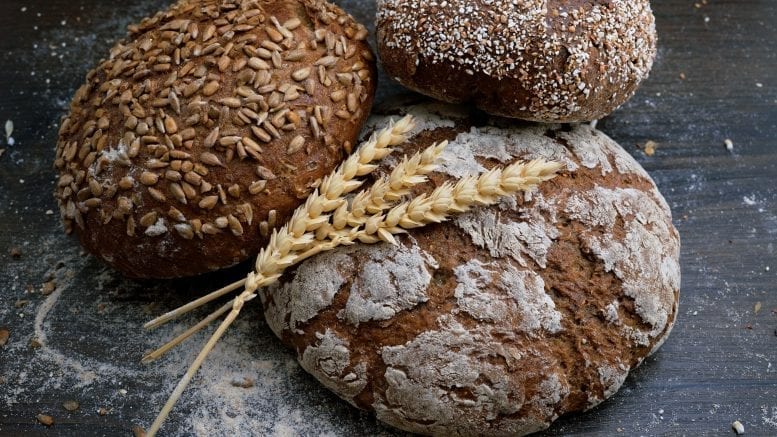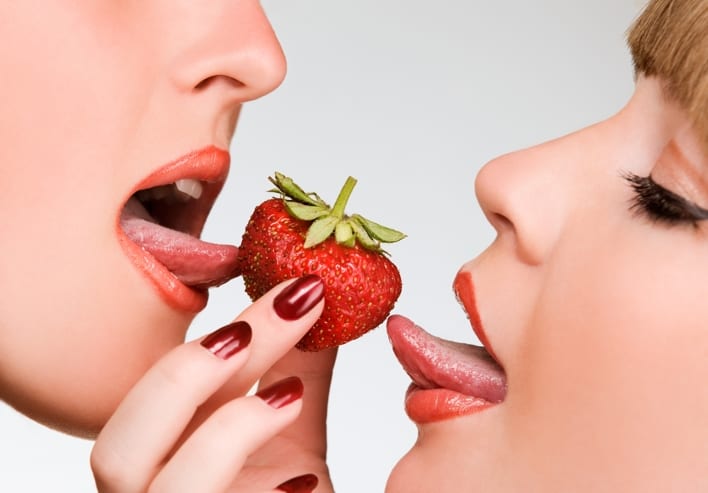Have you ever asked what the bread you have been eating is made from? What are the ingredients of that soft, delicious bread? It is gluten! Apart from it having various components, the one responsible for its softness, is gluten. So now, what is gluten?
A protein molecule that is found in most of the grains like rye, wheat, and barley is called gluten. Also, gluten is found in almost all kinds of grains, cereals, and bread. Grains like rice, soybeans, and oats are exempt from the list of grains with gluten in them. Hence, food products made from these grains do not contain gluten.
What is Gluten: Good to Know Facts
One very common misconception about gluten is that it simply is grain. While, yes, gluten is typically found in wheat and other mainstays in the grain family, it is not synonymous with grains. Gluten is a component of grains and cereals. This fact does not imply sameness for simple inclusion in the grain family does not ensure that foodstuff will contain gluten. For example, many kinds of grains don’t even include a molecule of gluten.
And this gets to the heart of the question of what is gluten. Because, if grains can exist without gluten then, by definition, gluten cannot be grain! Duh! For instance amaranth, oats (though there is some controversy about this), buckwheat, and soybeans are all gluten-free foods.
So if gluten is not a grain, then just what is gluten? Gluten is made up of several defining characteristics. For example, gluten has insolubility to water meaning it will not dissolve when placed in some good, old fashioned H20. It can, on the other hand, be expunged from grain, (and this is a unique characteristic that defines what is gluten) by kneading your base dough stringently. Though, to be honest, this can be a controversial topic and for many with gluten intolerance or gluten sensitivity, it is the best practice to abstain from consuming gluten-containing foods.
Perhaps we are now starting to get a grip on the answer to our most elementary question: What is gluten? Let’s go further and look at some of the defining characteristics of gluten in bread, the food it is most often associated with. Bread, of course, has many unique characteristics and it is the gluten within it that actually causes a great many of these traits. For instance, it is gluten that gives bread the bendy, chewy composition that we are all so familiar with. Due to this, bread that has been depleted of gluten tends to revert to a pudding-like, sticky glob of goo as it is gluten which gives it its shape.
Gluten is also tough. (You might say it makes a tough cookie!). Because of gluten, certain bread items like pizza dough or bagels have a dense, chewy composition. This is in fact somewhat related to the characteristics of gluten that we mentioned above and is one of the reasons why people with gluten sensitivity have difficulty digesting it and need to stick to gluten free foods.
Another trait of gluten is the fact that it will retain gases in the baking process. Simply put this is why bread rises. It is because of gluten! And, again, this is one reason why people with a gluten allergy will be best served by sticking to gluten-free foods.
So we have begun to answer that of what is gluten. However, do not think that the question has been answered sufficiently for there are other characteristics of gluten as well. Gluten is also responsible for the staling of bread and we all know what that looks like!
Additionally, gluten promotes absorption so foods containing gluten are able to soak up fluid. Because of gluten, bread, for instance, is very absorbent. This quality allows the gluten to function as imitation meat and is therefore popular with many vegetarians. Due to this, those individuals who maintain a gluten-free diet due to gluten sensitivity will often avoid “fake” meat and other imitations.
Gluten is also responsible for the rising ability of the bread. The shape and the softness of the bread is influenced by gluten. Gluten is also used to make meat substitutes because of its ability to absorb liquid. If one is sensitive to gluten, it might also trigger Celiac disease.
Naturally, gluten intolerance and gluten allergy are not laughing matters but we need to approach all topics with a certain levity I do believe. The main point is that we have gone a long way in answering the question that we started with. What is that question, naturally I am talking about what is gluten!
Gluten-Free Recipes at Your Fingertips
Nowadays, good-tasting gluten-free recipes are found on the internet. You do not have to suffer and forget about your favorite foods. Many people are sensitive to foods and products with gluten which is why the market has consistently made good strides at providing gluten-free food.
The internet is just one click away and voila, your favorite recipes are there without the added gluten-containing products. Your local bookstore can provide good recipe books for you, as well. In this way, you do not have to eliminate your favorite foods.
Gluten-free recipes are very essential especially to those who have conditions wherein they cannot tolerate gluten in their bodies. Pasta, cakes, and bread are foods that in one way or another have gluten in them. Basically, these foods are the most common foods people love to eat. There is a way for you not to sacrifice your cravings but still continue eating these goodies. Gluten-free recipes are everywhere.
Public awareness is very essential in helping people who are sensitive to gluten. The market has increased its options for these people.
There are any number of foods containing gluten and some of these may be surprising. I have posted an incomplete list of many of these gluten offenders. Remember that many foods contain “hidden” gluten so you need to be extra vigilant in checking labels before you consume anything if you are gluten intolerant and specifically if you have celiac disease.
Gluten is a protein found in wheat, rye, and barley. The gluten protein gives foods such as bread the stickiness and elasticity which is why many have a hard time digesting it. However, there are many ingredients other than just wheat, rye, and barley that you need to pay attention to on labels to understand what you can and cannot eat. Some of these are listed below.
Foods Containing Gluten if not labeled “Gluten-Free”. The gluten-free label is easy to recognize on many food products these days. The FDA has recently come out with a list of guidelines for what can be labeled gluten-free and what can not. These guidelines will help manufacturers and consumers in understanding which products are gluten-free and which are not.
Foods Containing Gluten
Here are a few products you need to look for a gluten-free label – if available.
- Yorkshire pudding
- Pie and pastry crust
- Stuffing
- Muffins
- Bagels
- Pancakes
- Apple topping
- Pizza dough
- Breakfast cereals
- Bran
- Sponge pudding
- Cake
- Ketchup
- Barley
- Barley malt
- Couscous
- Durum
- Einkorn
- Emmer
- Farina
- Farro
- Graham Flour
- Kamut
- Kashi
- Malt
- Matzo
- Orzo
- Pasta (whole grain and processed)
- Pretzels
- Rye
- Seitan
- Semolina
- Spelt
- Triticale
- Wheat
Because so many people are gluten intolerant or have Celiac disease, gluten can be a health hazard to a significant portion of the population. It is estimated that between 1.5 to 4 million people in the United States alone have significant problems digesting gluten. Therefore, one would think that if you just avoided the foods above you would be okay. Unfortunately, there are many other foods containing gluten that are not so obvious. These foods often trip up gluten intolerant individuals who are not aware that they contain gluten in the first place.
Here is a list of so-called hidden gluten foods:
- Boxed soups
- Imitation meat, such as soy-based meat-substitute products.
- Soy sauce
- Chicken and beef stock cubes
- Gravy powders
- Sausage processed with filler
- Malt Vinegar
- Pickles
All of the above food items either always or usually contain gluten. Obviously, as you can see, gluten is an extremely common ingredient in the foods that we eat either as a part of grains or as a food additive. Therefore it is essential that you continue to stay on your toes if you are adhering to a gluten-free diet.
Food packaging companies are increasingly aware of the problems posed by gluten to a significant minority of their customer base. As such they have gotten much better about being clear, easy to understand, and direct when and if one of their food products contains gluten. Still, it is no picnic having to check the boxes to make certain that particular food does not contain gluten. However, now that you have a partial list of foods containing gluten you will be much more capable of making an informed decision.
Natural Gluten-Free Foods
Here is a list of naturally gluten-free foods that will be safe to purchase as long as they are not prepared with gluten-containing ingredients. This is not a comprehensive list but certainly, it’s a good start:
- Amaranth
- Arrowroot
- Buckwheat
- Butter
- Bean Flour
- Corn (Not all corn tortillas are gluten free – look for the “G”)
- Chicken
- Eggs
- Fish
- Flax seed
- Fresh fruits
- Garbanzo beans
- 100% Fruit juices
- Free vegetables
- 100% Vegetable juices
- Grits
- Honey
- Lentils
- Meats
- Millet
- Milk
- Nuts
- Nut flours
- Potato start and flour
- Quinoa
- Rice
- Sago
- Soy (not soy sauce however)
- Seeds
- Shellfish
- Sugar
- Tapioca
- Teff
- Wild Rice
Is Alcohol Gluten-Free?
Not all alcohol contains gluten. Yes, it’s the reason for rejoicing after reading the list of everything you can’t eat anymore. Here is a partial list of gluten-free alcohol.
- Gluten-free beer – produced with nongluten ingredients such as buckwheat, sorghum, rice, corn, etc.
- My favorite is Red Bridge, Anheuser-Busch (US)
- Bard’s Tale Dragons Gold, Bard’s Tale Beer Company (US)
- New Grist, Lakefront Brewery (US)
- Greens Endeavour Dubble, Green’s (UK)
- Passover Honey Beer, Ramapo Valley (US)
- Sorghum Molasses Brown, Outer Banks (US)
- Distilled alcohol (THE KEY IS DISTILLED)
- Armagnac
- Bailey’s Irish Cream
- Brandy
- Bourbon – Makers Mark
- Champagne
- Cider – (no barley additives though)
- Cognac made from grapes
- Frangelico
- Gin
- Grappa
- Jagermeister
- Kalua
- Kirschwasser (cherry liqueur)
- Margarita Mix: Jose Cuervo & Mr. & Mrs. T.
- Martini (Club Extra Dry Martini – corn and grape)
- Mead – distilled from honey
- Ouzo
- Rum
- Sake (limited – no rice or barley)
- Scotch whiskey
- Sherry
- Tequila
- Vermouth distilled from grapes
- Vodka
- Whiskey
- Wine (including port, sherry, sparkling wine)
- Wine coolers (ONLY – those wine-based, not malt beverages) (Bartel & James; Boones)
Keep in mind – unless the label says gluten-free you should be careful in what you eat and drink.
DISCLAIMER: Food and beverage companies do change their ingredients from time to time so check labels and even call manufacturers to know for certain what is gluten-free.






Leave a comment